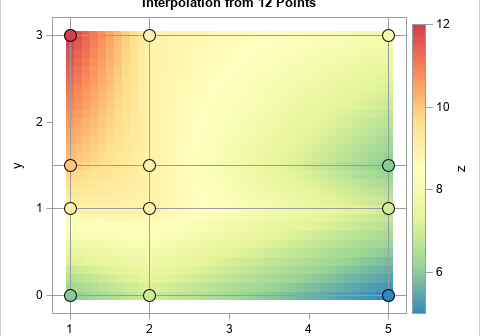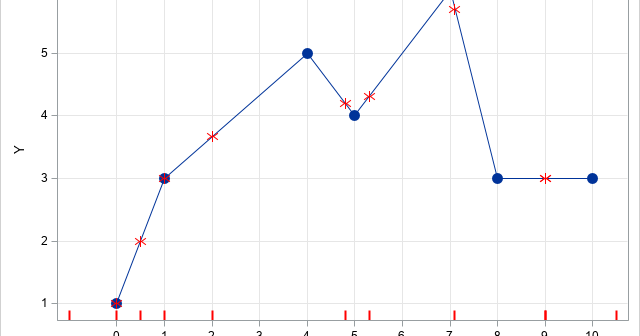
This article shows how to perform two-dimensional bilinear interpolation in SAS by using a SAS/IML function. It is assumed that you have observed the values of a response variable on a regular grid of locations. A previous article showed how to interpolate inside one rectangular cell. When you have a









